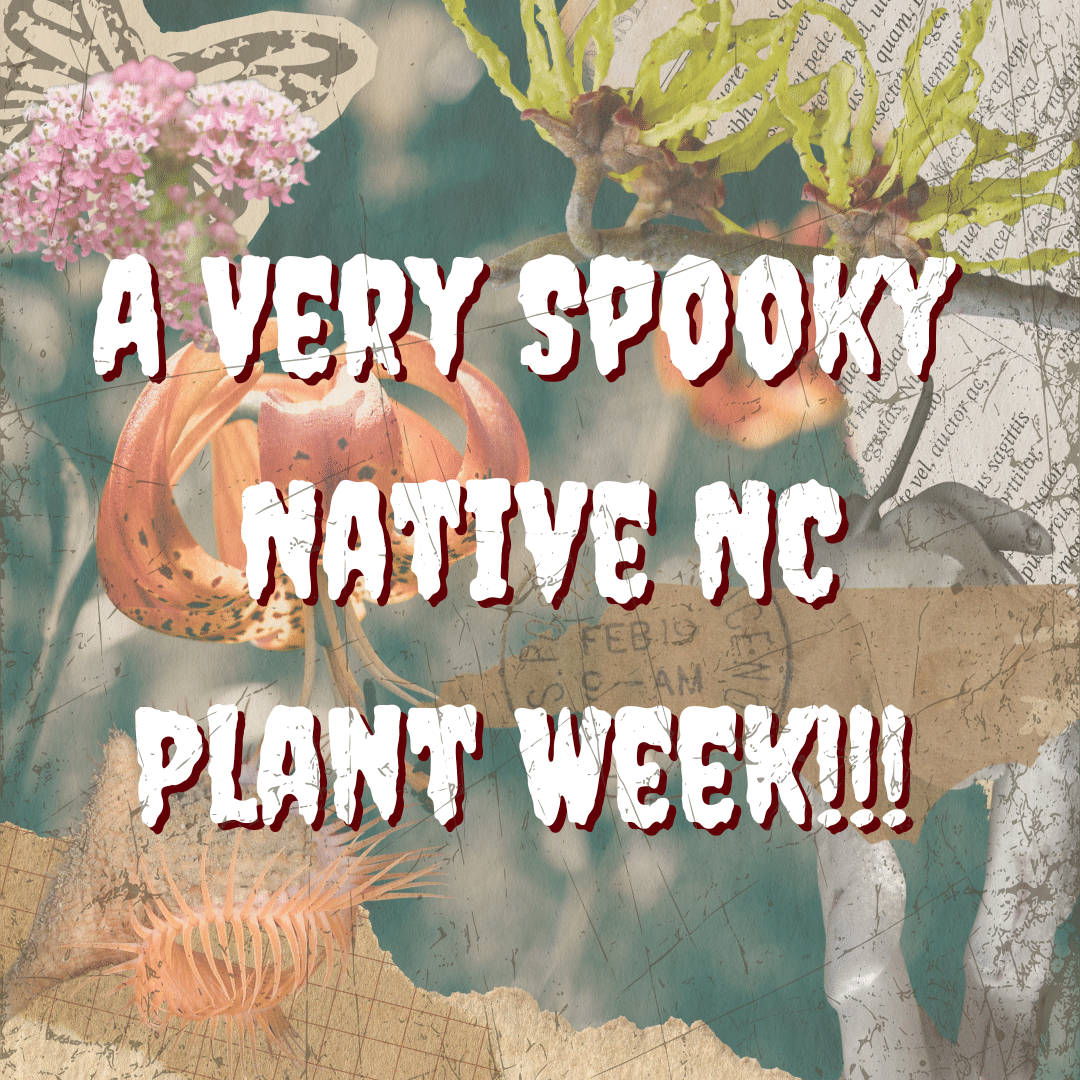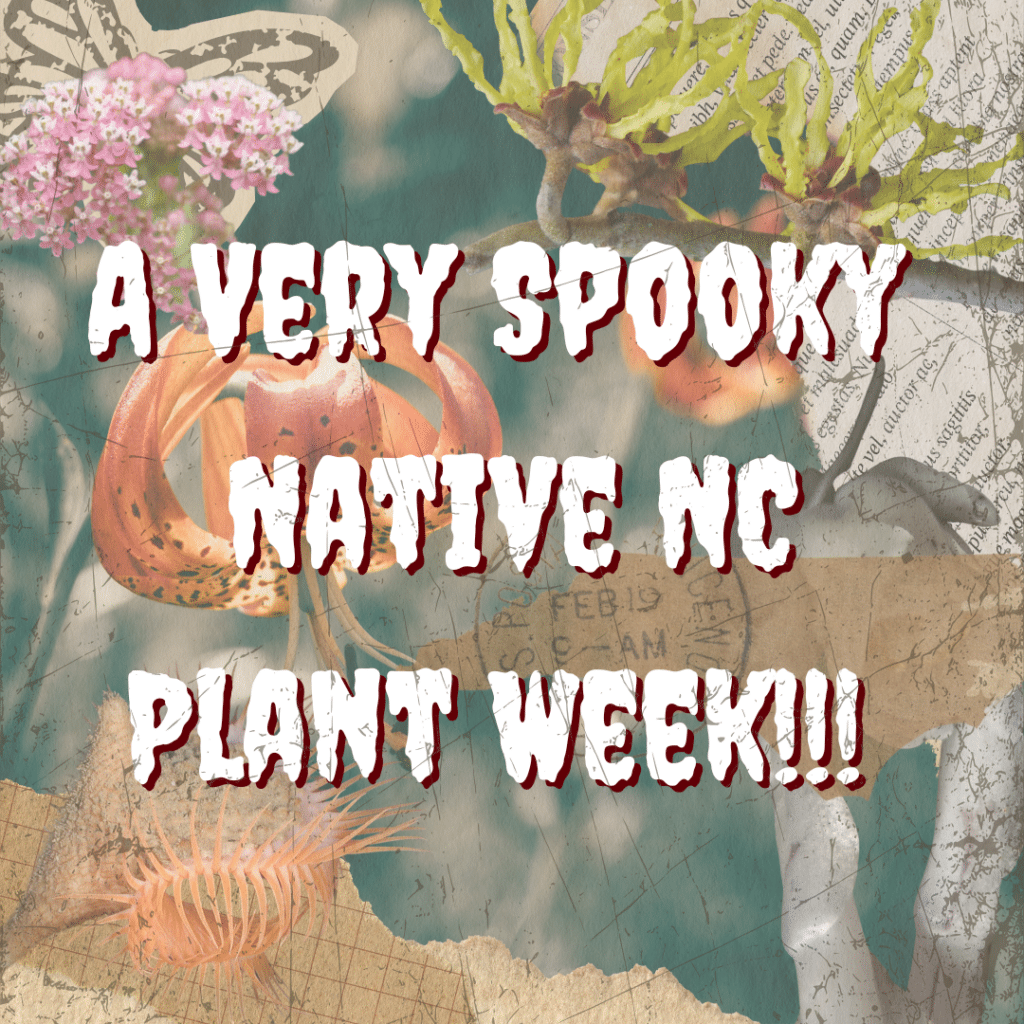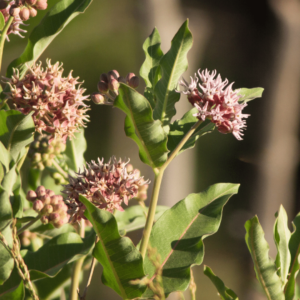



The Sandhills Lilly is a rare, delicate, and beautiful treasure of North Carolina, but it also holds a surprising secret: it thrives on fire! The Sandhills Lily’s scientific name is pyrophilum, which translates to fire-loving. Like many other Sandhills plants, these special lilies depend on prescribed fire for their survival. Unfortunately, many fire-dependent species have declined due to the lack of this essential management practice. That’s where TRLT’s Habitat Enhancement Lands Program (H.E.L.P.) comes in. By utilizing prescribed fires, TRLT helps to preserve fire-dependent species to ensure their habitats are open and sunny enough to thrive!

Often dubbed the “ghost plant,” the hauntingly beautiful Indian Pipe has no chlorophyll, does not depend on photosynthesis, and is able to grow in the darkest of forests! Without chlorophyll, this bone-white plant relies on mycorrhizal fungi for sustenance, drawing nutrients from nearby photosynthesizing plants. The Indian Pipe is not only a fascinating example of adaptation in action, it’s also one of North Carolina’s oddest and most unique native plants!

The Venus Flytrap is an infamous carnivorous plant native to the coastal wetlands of North Carolina. This plant captures insects with its jaw-like leaves, snapping shut and slowly dissolving its prey! The predatory nature of this plant makes it a fascinating – and frightening- addition to our list!
As with so many plants and animal species, the greatest threat to the Venus Flytrap is habitat loss. Like the Sandhills Lily, Venus Flytraps also need prescribed fires to survive and thrive, active land management is a must.

The twisted branches and yellow flowers of this plant have historically been associated with magic and healing. The first accounts of the American Witch Hazel was in 1588, Indigenous peoples were described as using Witch Hazel to make bows and arrows. Indigenous populations also used the flowers for food, medicine, and for sacred purposes. Today, Witch Hazel is used in skincare, medicine, and in food.

Milkweed may look harmless, but these little plants contain several toxic glucosidic substances called cardenolides, making their leaves poisonous to humans, pets, and livestock. While some insects are also affected by the poison, one colorful bug in particular is not only immune to Milkweed poison, it actually benefits from it!
Monarch butterflies have a unique relationship with Milkweed, as it’s the only plant they lay their eggs on and the primary food source of their caterpillars. In fact, so much Milkweed toxin is consumed by caterpillar larvae that it gets stored in their wings and exoskeletons as adults. If a Monarch is attacked, these stored-up poisons can make predators sick and cause them to avoid Monarchs in the future.
Because Milkweed and Monarchs share such a close relationship, when one is threatened, it affects the other. Milkweed has suffered due to the increased use of herbicides and land loss from urban development. This, in turn, has contributed to the endangerment of the Monarch Butterfly.
North Carolina’s Native Plant Week allows all of us to take a little more time to appreciate local flowers and plants, especially as we celebrate the spooky season! From the fire-loving Sandhills Lily to the ghostly Indian Pipe, these unique plants highlight mystery of our natural North Carolina landscapes. As we enjoy their beauty, let’s also remember the importance of conserving the lands they call home. By supporting conservation efforts, we can help ensure that these fascinating plants—and the stories they hold—remain a vibrant part of our landscape for years to come.